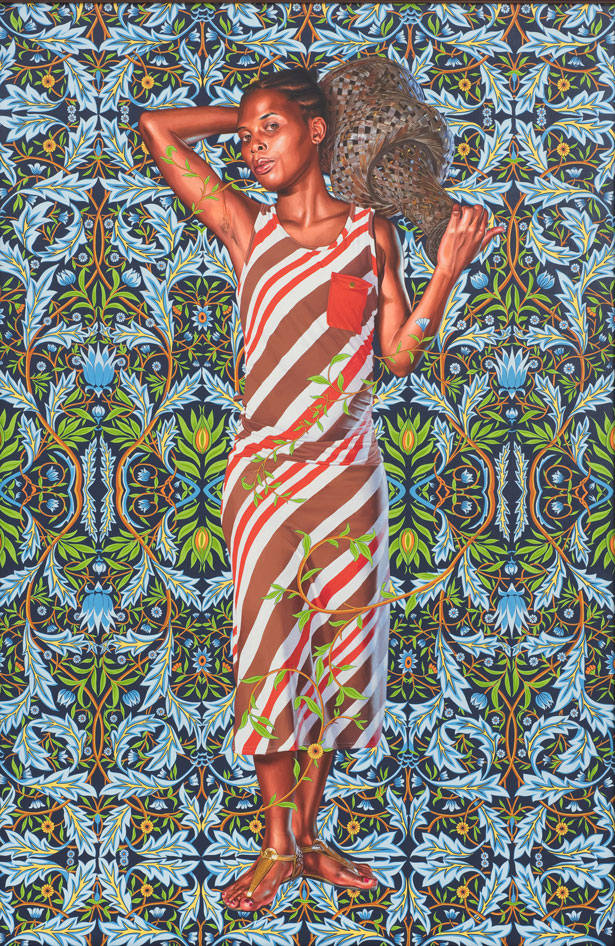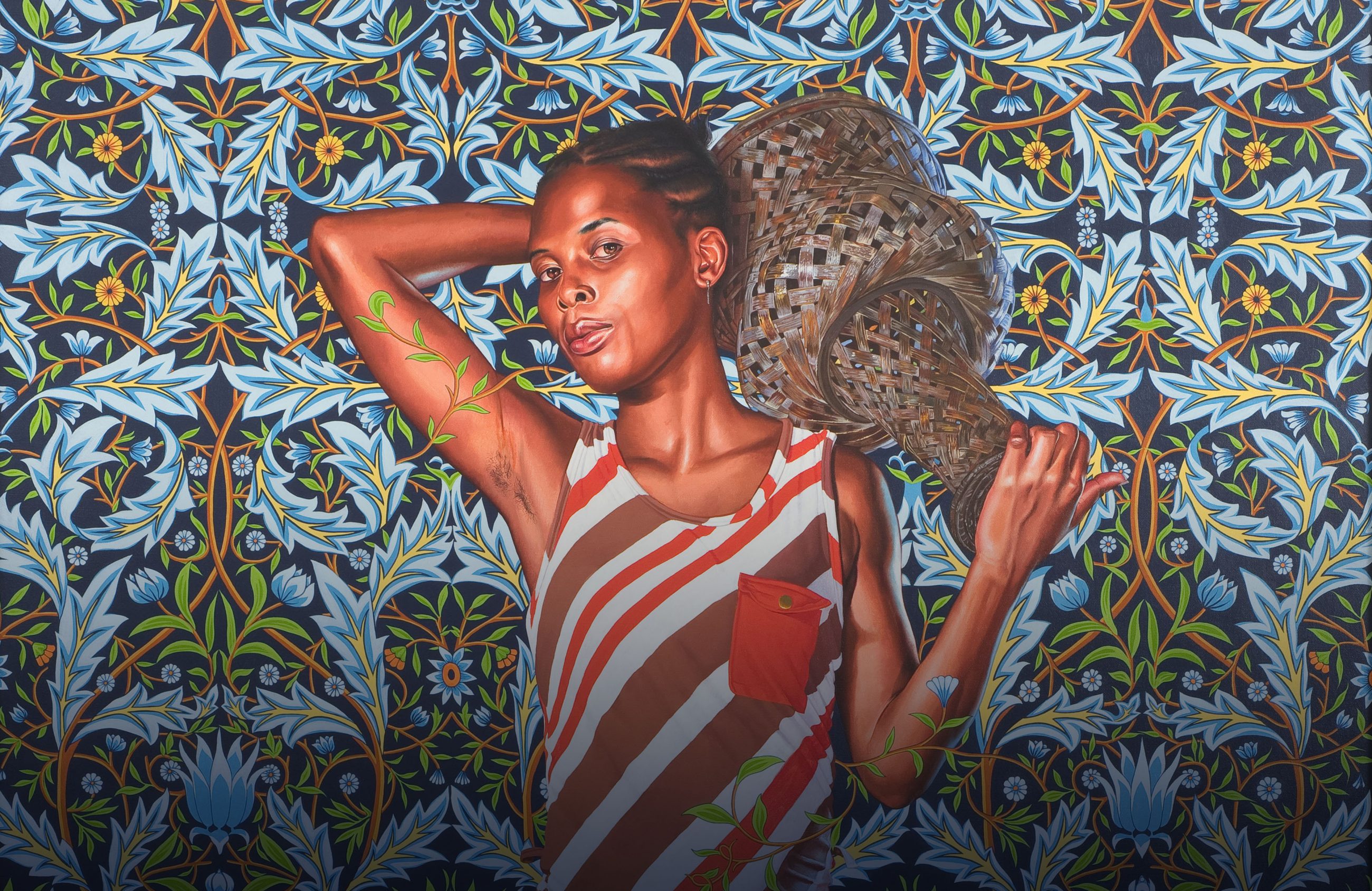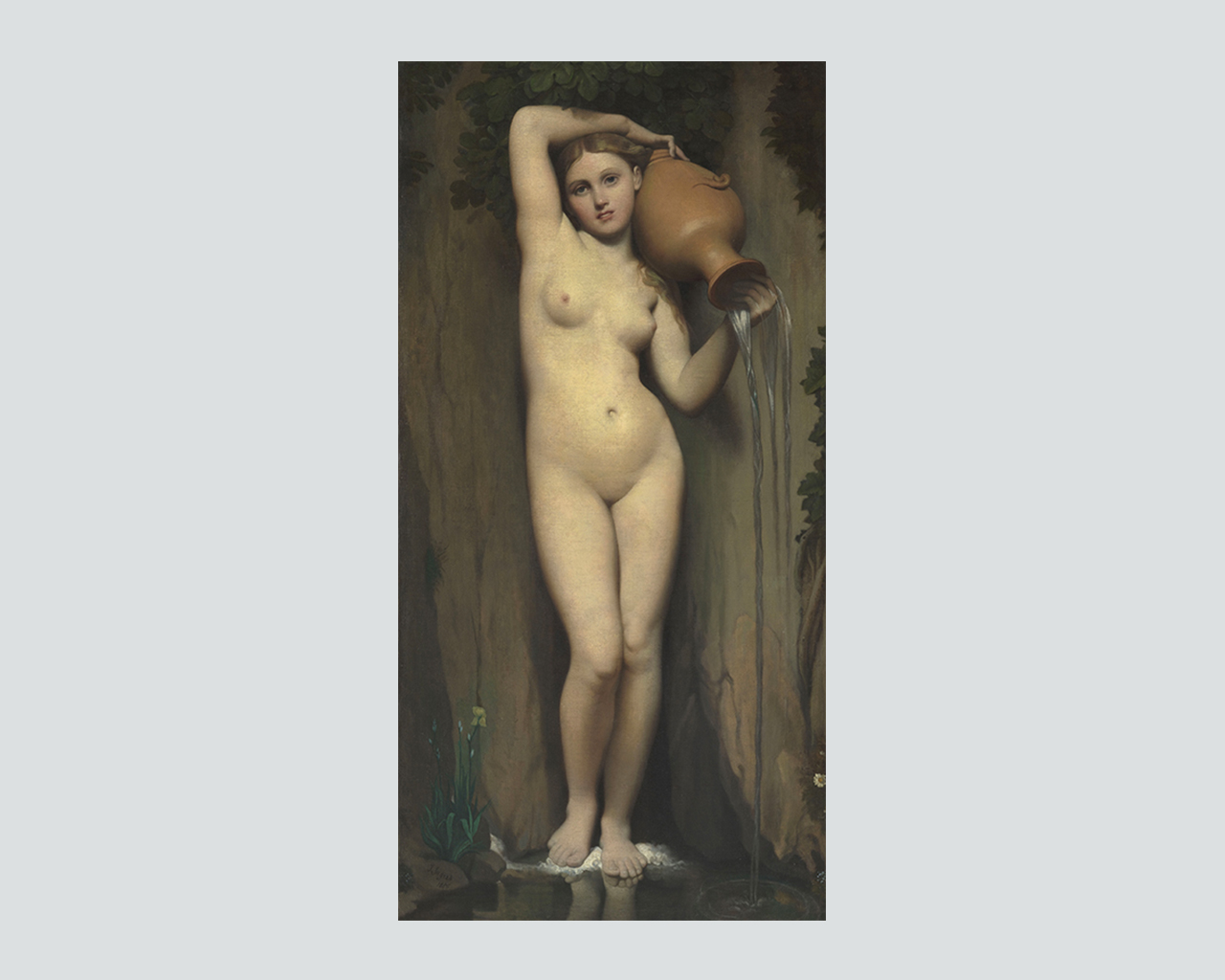“La Source” is part of a series of paintings Wiley did called The World Stage: Haiti — the New York-based artist has also done World Stage series in Sri Lanka, Jamaica, Brazil, Lagos and Dakar, France, China and Israel.
Enlarge

Upon traveling to Haiti for the series, Wiley put a call out over the radio for models, tapping into the country’s long tradition of beauty pageants. The female subject here is one of hundreds of Haitians who applied to pose for the artist. In a mini-documentary about the trip, Wiley says he went to uncover the difference between the Caribbean nation’s “perceived culture and lived culture,” wanting to highlight a more triumphant narrative than the tragic one the media usually focuses on — poverty and the aftermath of the 2010 hurricane. While we don’t know the woman’s name, you can see her audition and pose for Wiley’s photographer in the video (watch it at bit.ly/2dp8u4q).
Wiley paints on a large scale, and “La Source” is no exception. The painting is 84 by 55 inches — that’s 7 feet tall — so if, say, LeBron James stood next to it, he would still be 4 inches shorter than the canvas.
While Wiley’s work appears fantastically original, most of his paintings directly reference famous masterpieces from the Western art canon, typically from the major colonial powers such as France, Spain and England. “La Source” is a reimagining of the oil painting of the same name completed in 1856 by French neoclassical painter Jean-Auguste-Dominique Ingres. Wiley probably chose the work of Ingres because the French colonized the Haitian side of the island of Hispaniola (the other half is the Dominican Republic) in the 17th century.
Whereas Ingres’ “La Source” features a white woman standing in a stream with a ceramic pitcher flowing with water — which many art historians say is symbolic for fertility and harmony between man and nature — Wiley has posed his model with a wicker basket, clearly unable to hold liquid. What is Wiley saying here?
This is a linen canvas (made from flax), Wiley’s material of choice. Pricier than cotton canvases, linen canvases are more durable and tend to warp less under layers of paint over time, thus making it a better choice for large-scale paintings.
One of distinctive markers of a Wiley painting is the Baroque-like backgrounds of flora, creating an intricate wallpaper effect. In his artist statement for the Haiti series, Wiley says: “The backgrounds of the paintings incorporate images of vegetation found on Haiti such as okra, brought first to the island from Africa, and sugarcane, a food product that was broadly exploited as a cash crop during slavery.” However, in this specific painting, the plants don’t seem to be okra or sugarcane. EW contacted members of Oregon State University Extension Service’s Master Gardener program and the OSU Department of Horticulture, but the majority responded that the painted flora are most likely a stylized amalgamation of different plants; some offered that the plants could be anything from blue aster, blue lotus, blue marguerite or blue hibiscus (hibiscus is Haiti’s national flower).
What: A 2014 oil painting featured in the exhibit Between the World and Me: African American Artists Respond to Ta-Nehisi Coates
When: Now through March 5, 2017
Where: In the Jordan Schnitzer Museum of Art’s Artist Project Space on the first floor near the main entrance

